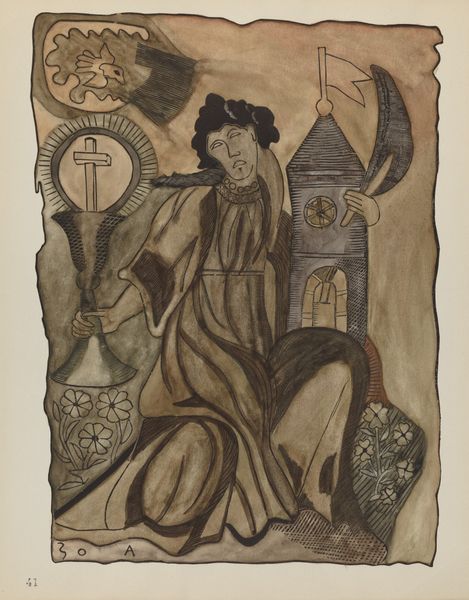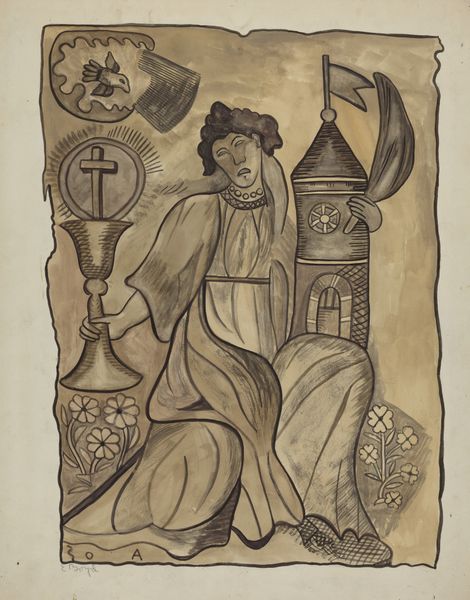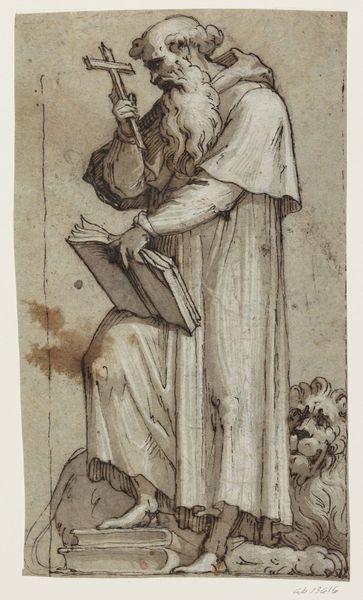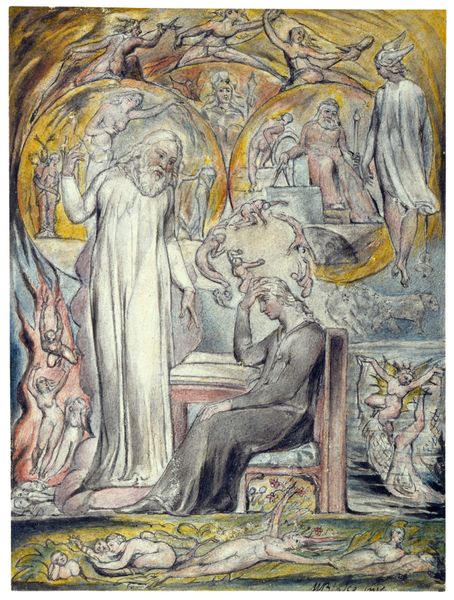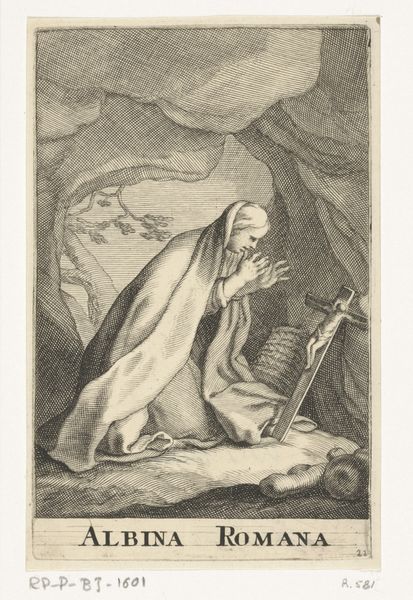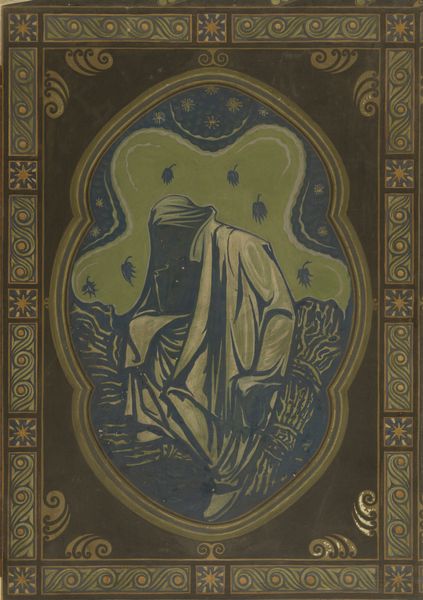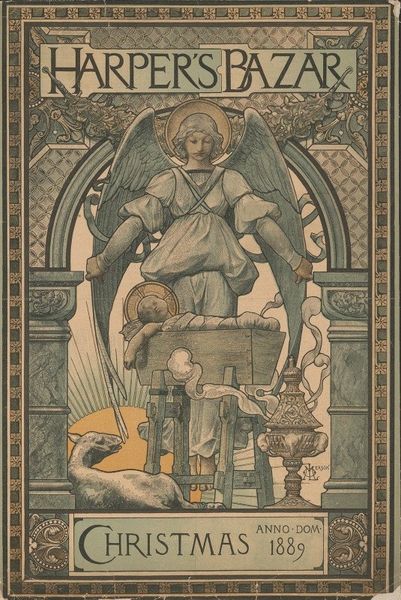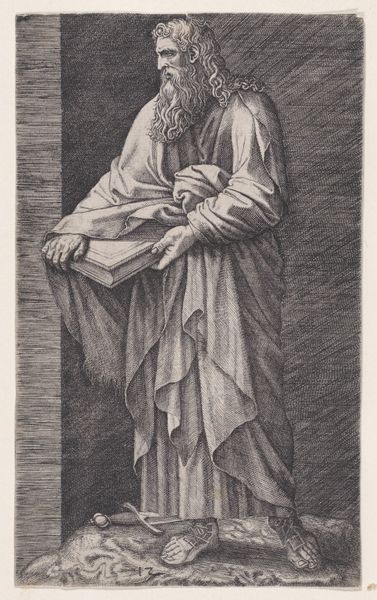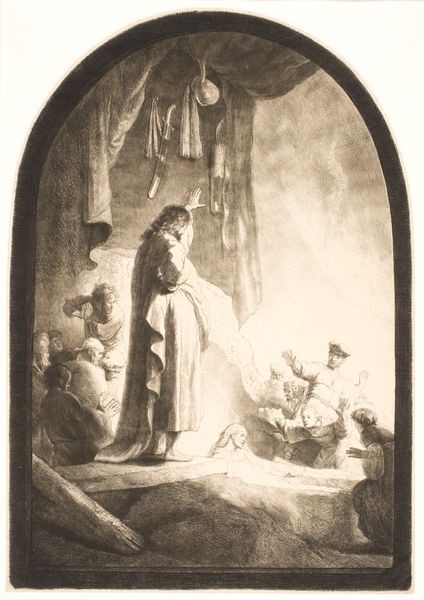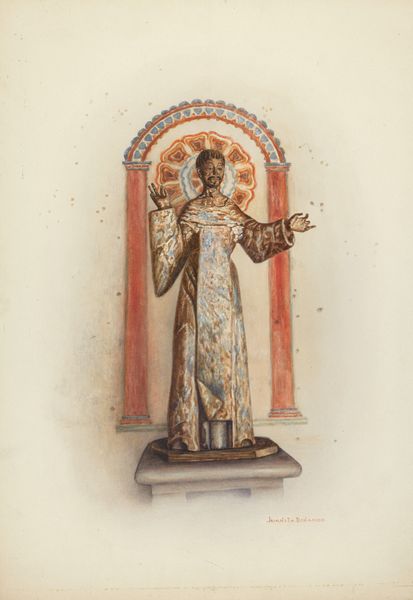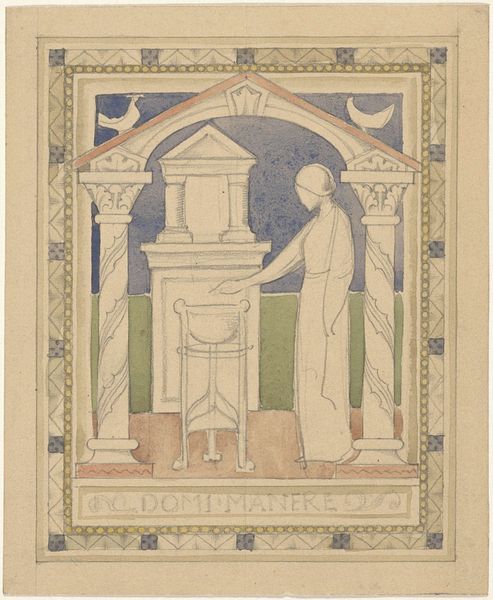
Plate 41: Santa Barbara: From Portfolio "Spanish Colonial Designs of New Mexico" 1935 - 1942
0:00
0:00
drawing, watercolor, ink
#
portrait
#
drawing
#
caricature
#
watercolor
#
ink
#
academic-art
Dimensions: overall: 35.6 x 28 cm (14 x 11 in.)
Copyright: National Gallery of Art: CC0 1.0
Curator: Here we have plate 41 from the portfolio "Spanish Colonial Designs of New Mexico", a watercolor and ink drawing believed to be created between 1935 and 1942 by an anonymous artist. It's titled "Santa Barbara". Editor: There’s a somberness about this piece, wouldn’t you say? The limited palette emphasizes the austerity, almost like a woodblock print attempting to capture depth with stark shadows and stylized figures. Curator: It's interesting to think about this image as part of a portfolio intended to showcase Spanish Colonial design. The artist likely viewed the churches and their associated iconography in Santa Barbara, New Mexico, as resources, pulling elements for reproduction and study, or possibly for marketing the aesthetic as authentic. Editor: And we should note how Santa Barbara, as a historical figure, gets reimagined here. Stripped of her typical radiant attributes, she is made solemn, holding a chalice with the cross; there’s an unusual austerity here, perhaps reflecting the realities and material conditions of New Mexico during that time period. We can ponder on the labor involved in reproducing Catholic iconography as part of regional cultural affirmation. Curator: That’s insightful. This process highlights how cultural symbols are consumed and reinterpreted depending on the context and resources. We see how religious imagery, far from being static, is constantly renegotiated through its making and reproduction. It forces one to consider the artist’s own access to materials, the local understanding of craftsmanship, and whether this work, in its replication, becomes a commodity or a symbol. Editor: Exactly. The political and cultural context also demands investigation: Is it an homage, an appropriation, or a commentary? How might its display reinforce, or even subvert, dominant narratives about culture in New Mexico? It's such a rich visual statement about cultural dialogue during that time. Curator: A dialogue expressed through line, form, ink, and watercolor… quite compelling, especially knowing so little about its creator and the circumstances of its creation. Editor: Yes, pondering the complex intersection of culture, gender, religious iconography, and regional experience embedded in the artwork has made for some deeply felt reflection.
Comments
No comments
Be the first to comment and join the conversation on the ultimate creative platform.

